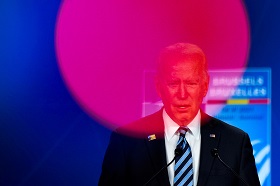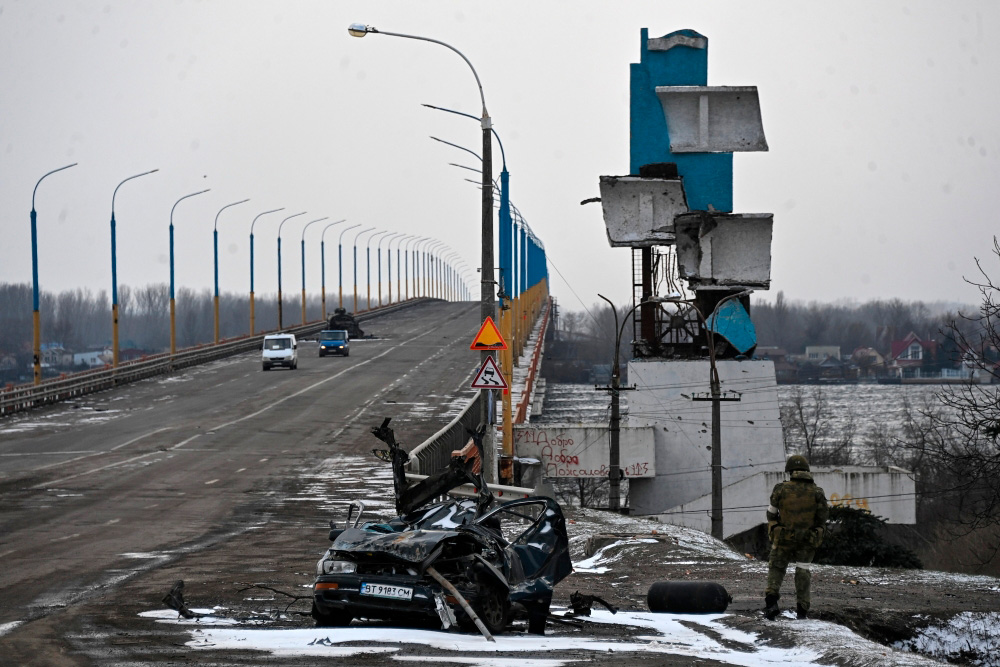For Brussels, the events concerning Ukraine in the 2010s played the role of the “badly forgotten old”. Summit decisions in Wales in 2014 and Warsaw in 2016 launched the process of returning the alliance to its original area of responsibility, tactically highlighting the defence of the bloc’s eastern borders. Russia’s 2022 special operation could end this cycle by solidifying NATO’s identity as a regional military alliance built around a common threat, at least for the time being. After one month, the rapid development of events makes forecasting difficult, but several trends can be observed.
Germany’s decision to allocate an additional 100 billion euros for defence spending and bring it up to 2% of GDP by 2024 could indicate a qualitative shift for the material dimension of NATO. The growth of the alliance’s military budget stimulates technological improvement, including that of cyber systems, and the improvement of logistics solutions, primarily in Europe.
From a functional point of view, strengthening the Russian deterrence arsenal is very likely to be a key NATO activity in the near-term. It is familiar to the alliance from the Cold War period—these are regular military exercises, the positional nature of the deployment of troops, the aforementioned development of military capabilities. Today, two opposite processes can be observed. On the one hand, from the territory of NATO countries, first, arms are supplied to Ukraine: not only from United States, but also Germany, which changed its initial decision during the operation. On the other hand, these actions do not necessarily lower the escalation threshold. For example, there is no question of renouncing the restrictions of the Founding Act of Russia-NATO relations on the non-deployment of nuclear weapons in the “new” countries of the alliance. Moreover, as a result of mutual signals an understanding was formed of the inadmissibility of a large-scale war.
From an ideological point of view, the situation favours the development of a common threat narrative that is understandable to all as a central element of transatlantic solidarity for solving both internal and external tasks. In conditions where the information field is heated to the limit, alternative points of view are subject to “cancel culture”, leaving two options—support for a common course or cautious silence. Both help rather than hinder NATO’s focus on deterring Russia in the short term.
The story of the North Atlantic Alliance in the post-bipolar era is that of the search for a formula that would allow for the maintenance of centripetal tendencies from a material, functional and ideological point of view.
Until the mid-2010s, NATO expansion took place almost inertially, in quantitative and qualitative terms. As a result, the list of tasks of the alliance has become widely diversified (from crisis management operations to combating cyber threats and climate change), and the area of responsibility became truly global, including the Western Balkans, the Middle East and—practically—China. However, building a new identity through economies of scale has run into difficulties. The strategic concept of 2010, which postulated the grand design of a post-bipolar NATO, set a very high bar, while the strategic cultures of the allies, especially the “new” allies, did not have time to adapt at the very least, and, at most, came into conflict with it in all three of the categories indicated above.
For Brussels, the events concerning Ukraine in the 2010s played the role of the “badly forgotten old”. Summit decisions in Wales in 2014 and Warsaw in 2016 launched the process of returning the alliance to its original area of responsibility, tactically highlighting the defence of the bloc’s eastern borders. Russia’s 2022 special operation could end this cycle by solidifying NATO’s identity as a regional military alliance built around a common threat, at least for the time being. After one month, the rapid development of events makes forecasting difficult, but several trends can be observed.
Germany’s decision to allocate an additional 100 billion euros for defence spending and bring it up to 2% of GDP by 2024 could indicate a qualitative shift for the material dimension of NATO. The increase of military budgets has been a cursed problem for the alliance since the mid-1970s, and was explicitly posed at the 2006 Riga summit, when the 2/20 formula emerged. [Allocate at least 2% of the country’s GDP to defence, and 20% of this amount to technological developments in the defence sector. The first indicator proved to be more difficult to achieve than the second one: the USA, Britain, France and Norway historically allocated 2% or more of GDP in 2016-2021. Greece, Poland, Slovakia, Romania and the Baltic countries reached the mark. Berlin was in no hurry to implement it, even under pressure from the Donald Trump administration, not exceeding 1.5%. Today it sets an example for other doubtful NATO members. The Netherlands has already announced an increase in defence spending. Moreover, the country, despite its close allied relations with the United States, did not seek to increase spending. But even before the start of the special operation, the government of Mark Rutte decided to take this step against the backdrop of a general escalation of the situation in Europe. Canada also took this step following the Prime Minister’s visit to Europe [i].
The growth of the alliance’s military budget stimulates technological improvement, including that of cyber systems, and the improvement of logistics solutions, primarily in Europe. Germany has already announced its intention to cooperate with the EU in the development of fighters and tanks, and such projects can be implemented, for example, within the framework of the Permanent Structured Cooperation (PESCO). If the Franco-German tandem strengthens again within the project, this could give a new impetus to the development of Europe’s “strategic sovereignty” in the field of defence, and the Versailles Declaration following the EU summit on March 10-11 confirms this intention.
The “Strategic Compass”, approved on March 21, the first EU defense concept, will also play a role in the implementation of tasks both from a strategic and psychological point of view [ii].
From a functional point of view, strengthening the Russian deterrence arsenal is very likely to be a key NATO activity in the near-term. It is familiar to the alliance from the Cold War period—these are regular military exercises, the positional nature of the deployment of troops (which was later changed to a more mobile system of RRF units), the aforementioned development of military capabilities. From a theoretical point of view, these are sustainable common practices that contribute to maintaining the homogeneity of the alliance.
Today, two opposite processes can be observed. On the one hand, from the territory of NATO countries, first, arms are supplied to Ukraine: not only from United States, but also Germany, which changed its initial decision during the operation [Initially, Berlin refused to supply lethal weapons to Ukraine, today it is officially known that it intends to deliver 500 MANPADS Stinger and 1,000 anti-tank systems, 400 hand grenade launchers, 14 armoured personnel carriers and fuel]. Turkey does not provide military assistance free of charge, but thematic exports have increased [iii].
Second, due to internal reshuffles, the alliance’s borders in Central and Eastern Europe—Slovakia, Poland, Romania, the Baltic States, Bulgaria, as well as the US grouping in Europe—are being strengthened. Third, on March 14, one of the largest NATO manoeuvres, Cold Response 2022, began in Norway.
On the other hand, these actions do not necessarily lower the escalation threshold. For example, there is no question of renouncing the restrictions of the Founding Act of Russia-NATO relations on the non-deployment of nuclear weapons in the “new” countries of the alliance. Moreover, as a result of mutual signals an understanding was formed of the inadmissibility of a large-scale war. Even before the start of the active phase of the conflict, NATO military advisers were withdrawn from the territory of Ukraine [iv]. On March 4, following the results of the Ministerial Council, NATO Secretary General Stoltenberg stated that “[in Ukraine] there should be neither aircraft nor NATO ground forces.” “NATO cannot be at war with Russia,” says British Prime Minister Boris Johnson. A similar position was expressed by Joe Biden. Against this background, hints of the potential entry of Sweden and Finland into NATO, the supply of Polish MiG-29s to Ukraine, and the introduction of a no-fly zone over it, are disavowed in one form or another. [Thus, the Prime Minister of Sweden said that the issue of Stockholm’s accession to NATO is not on the agenda as potentially provocative. The telephone conversation between Russian President Putin and the Finnish President was aimed, not least, at preventing Finnish rapprochement with the alliance. At the same time, it is important to understand that in fact both countries are very closely linked to NATO, and formal accession is unlikely to drastically change the strategic balance in Northern Europe.] The political dimension of the conflict, namely the potential accelerated accession of Ukraine to the EU, did not receive a “green light” at the EU summit either: the leaders of major countries clearly opposed the acceleration of the procedure. The urgent NATO summit on March 24 also passed without strong decisions.
From an ideological point of view, the situation favours the development of a common threat narrative that is understandable to all as a central element of transatlantic solidarity for solving both internal (maintaining the military-industrial complex and bureaucracy, interdependence of allies) and external (passive security) tasks. In conditions where the information field is heated to the limit, alternative points of view are subject to “cancel culture”, leaving two options—support for a common course or cautious silence. Both help rather than hinder NATO’s focus on deterring Russia in the short term.
The final word belongs to the new NATO Strategic Concept, which will be adopted at the alliance’s summit in Madrid in June. Experts note that the document can give Russia a status symmetrical to its inclusion of NATO members in its list of unfriendly countries. History shows that doctrinal documents acknowledge the “new reality” rather than create it, and the likelihood of focusing on the “Russian threat” is especially high. However, it also reminds us that the “reality” of documents has been turning from actual to historical over the course of several years. Will the trend repeat itself in 2022?
i. Ottawa’s figures were 1.4% of GDP, and the government, which had little interest in the development of the European part of NATO, was in no hurry to increase them.
ii. Ottawa’s It is important to take into account, however, that the adoption of the concept has no direct connection with the crisis around Ukraine. The development of the document began in 2020 and its completion was originally scheduled under the French EU Presidency in early 2022. However, current events have contributed to the harmonization of the text, which until then had not been without difficulties.
iii. Ottawa’s These are, first of all, UAVs, ammunition, body armour and helmets.
iv. Ottawa’s The United States, Canada and the United Kingdom made corresponding statements in mid-February, and Washington reiterated them on March 13, when the Ukrainian side reported the potential death of one of these servicemen.






